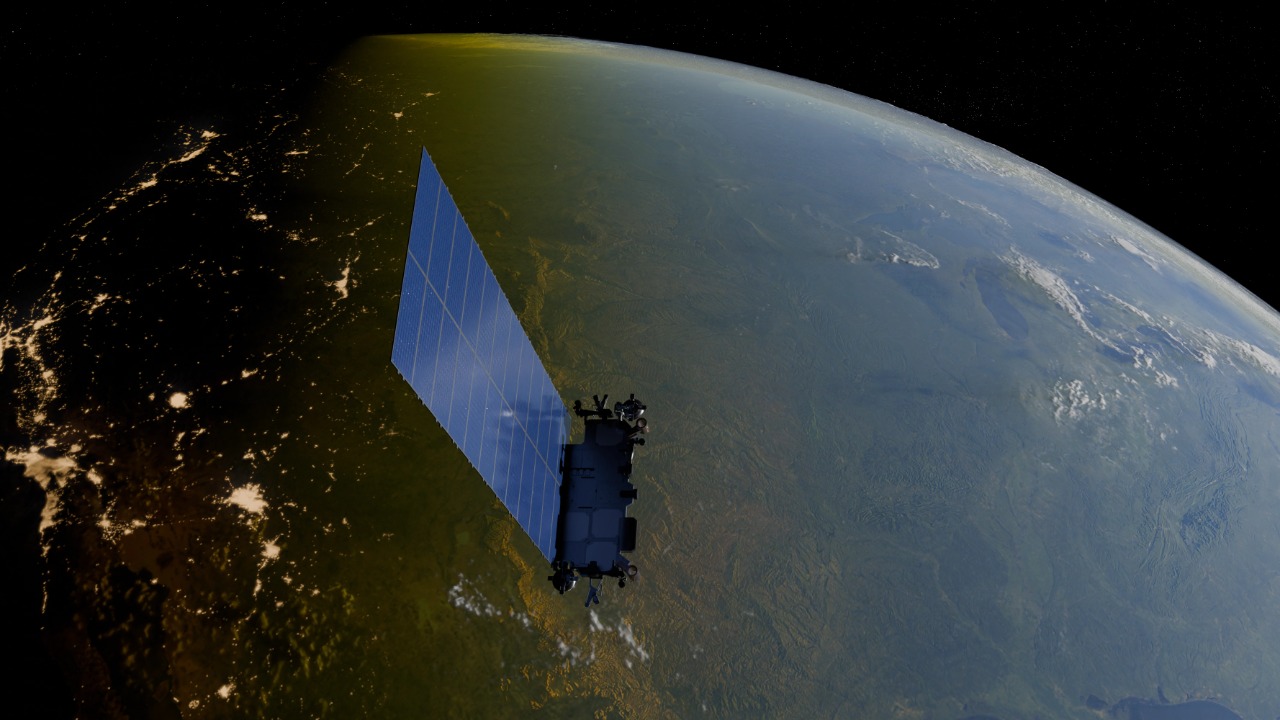
Elon Musk’s SpaceX is making a bold move in the global broadband market with its Starlink V3 satellites. These new satellites are three times larger than their predecessors and promise to deliver internet speeds that are ten times faster. This significant leap in technology could potentially disrupt the fiber optic infrastructure, positioning satellite-based connectivity as the superior choice.
Starlink V3 Satellite Dimensions
The Starlink V3 satellites are a marvel of engineering, being three times larger than the previous models. This increased size allows for a greater payload capacity and improved orbital efficiency. The larger size of the satellites has necessitated innovations in manufacturing, such as enhanced solar arrays and propulsion systems specifically designed for the V3 model. These advancements have been crucial in overcoming the engineering challenges associated with producing larger satellites.
The implications of these larger satellites extend to the launch requirements as well. The V3 satellites are compatible with SpaceX’s Starship, allowing for the deployment of higher volumes of satellites into low-Earth orbit. This compatibility is a strategic move by SpaceX, as it allows for a more efficient and cost-effective deployment of the satellites.
Speed Improvements in V3 Technology
The Starlink V3 satellites are not just larger; they are also significantly faster. The new satellites aim to deliver data transmission rates that are ten times faster than the previous models, exceeding 1 Gbps per user under optimal conditions. This speed boost is a game-changer for both residential and enterprise applications, providing users with high-speed internet access that rivals, if not surpasses, traditional fiber optic connections.
The speed improvements in the V3 satellites can be attributed to the use of advanced phased-array antennas and laser inter-satellite links. These technologies allow for faster data transmission without the need for ground-based relays. Compared to the V2 satellites, the V3 models offer reduced latency, making them ideal for real-time applications such as gaming and video conferencing.
Elon Musk’s Role in V3 Development
Elon Musk has been instrumental in the development of the Starlink V3 satellites. His vision for SpaceX’s satellite internet service is to connect unserved regions of the world, particularly remote areas in Africa and Asia where fiber optic infrastructure is lacking. Musk’s aggressive push for the production and deployment of the V3 satellites is a strategic move against legacy internet providers.
Musk has set a timeline for the initial launches of the V3 satellites. By late 2026, he aims to have over 40,000 satellites in the Starlink constellation. This ambitious plan underscores Musk’s commitment to making satellite-based internet access a viable and superior alternative to traditional broadband services.
Technical Innovations Driving V3 Capabilities
The Starlink V3 satellites are packed with technical innovations that enable their enhanced capabilities. One of these is the integration of higher-bandwidth E-band frequencies, which support the tenfold speed increase while minimizing spectrum interference. Despite the larger frame of the V3 satellites, SpaceX has managed to miniaturize components, such as denser chipsets for onboard processing, to maintain a compact design.
Power management has also been improved in the V3 satellites. The use of more efficient gallium nitride amplifiers allows for sustained high-speed operations across the satellite network. These technical advancements are key to the superior performance of the V3 satellites and their potential to disrupt the global broadband market.
Impact on Global Internet Infrastructure
The enhanced speeds and coverage of the Starlink V3 satellites could significantly disrupt the dominance of fiber optic infrastructure in both urban and rural markets. The satellites offer an installation-free alternative to traditional broadband services, making high-speed internet access more accessible to a wider range of users.
From an economic perspective, the V3 satellites could potentially reduce the cost of high-speed internet access to $50 per month. This price point makes it competitive with traditional broadband providers, further increasing its appeal to consumers. However, regulatory hurdles, such as FCC approvals for denser orbital deployments, need to be overcome to realize the full potential of the V3 satellites.
Challenges and Future Prospects for V3
While the Starlink V3 satellites represent a significant advancement in satellite-based internet technology, they also pose certain challenges. One of these is the issue of space debris. The larger size of the V3 satellites increases the risk of space debris, which needs to be mitigated through autonomous de-orbiting features as mandated by international agreements.
Looking ahead, SpaceX has plans to expand its satellite internet service through partnerships with telecom giants. This would allow for the integration of the V3 satellites into hybrid networks, providing seamless global coverage. In the long term, Musk envisions achieving 99.99% uptime and serving 1 billion users by 2030, marking a new era in the evolution of satellite internet.